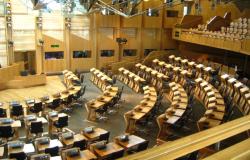Internal Battles within Partner Governments are what Determine Change. That has Big Implications for Aid.

Alan Whaites argues that aid workers should abandon their blueprints and focus instead on understanding internal reform battles within governments and trying to help those fighting poverty from within.
Recently a line stuck in my mind from one of Duncan’s recent posts about adaptive programmes with developing country partners: `if you introduce donors into that arrangement, ownership is diluted, and donor priorities and processes take over – the donors provide the recipe, and at best, the government gets to decorate the cake.’ Harsh surely? Are we really that bad? But the reason that it made me pause is that those of us who have worked for donors can probably think of one or two instances when it has not been that far from the truth – less often than Duncan might think, but occasionally it does happen.
For example, I now work with a UK government unit, NSGI, that entails being more operational than I have since my NGO days. NSGI partners directly with the institutions of other governments (usually their policy co-ordinating bodies) not as technical advisers but as peer civil servants working together on common issues. This means spending time inside partner institutions rather than just working on those institutions. The role has made me more circumspect about those occasional conversations with international donors, who have never visited their partner’s offices, and yet tell me definitively how good or bad it is.
Now I know from experience that this is a minority– the vast majority of colleagues are practitioners who see
Internal Battles 1: Turkey
collaborating with partners as the best part of their job. Even so the idea of imposed `recipes’ resonates with a development literature in which the idea of clinical distance can seem pervasive, the notion of the outside view as unbiased and clear. Hence when I am asked to review a political-economy analysis that has been commissioned, I find they often excel at recounting history and current affairs – but tell me very little about what people within governments actually think. The counterpart can be portrayed as a lab rat to be dissected while we talk about what we plan to do `to’ the institutions (make them more accountable, improve their financial management) rather than what they will do with us.
It is a difference that helps to explain why the ‘results frameworks’ that get tied to programme documents can sometimes be enticingly ambitious (for the approver) while also being wholly unrealistic. This sense of distance also helps to explain why sometimes those project documents can differ markedly from the strategies of the internal champions of pro-poor change (who are often fighting a series of small incremental battles).
These issues are not new. Ideas of working with the grain, and with reform champions are old, but Duncan’s blog suggests that issues still remain. Perhaps Pablos Yanguas’ recent book `Why we Lie about Aid’ captures the problem, suggesting that outsiders struggle to discern the roles of `incumbents’ and `challengers’ in struggles for change:
‘In practice, development is not a process of change, but a tug-of-war between reform mobilisation and demobilisation. These are competing processes in which challengers and incumbents, respectively, work to organise co-ordinated action for change or pre-empt and minimise the success of such action.’
When I asked one counterpart for a view of how donors could help them to deliver reform they described the
Internal Battles 2: Mexico
challenge in a similar way , but they then went on to add that getting donors to join such efforts is tough, given how often donor staff change and not always with sufficient handover.
For donors, none of this is easy – and the challenges create a risk that it becomes simpler to problematize the partner: elites are bad, mad and inept; or instead to blame the previous approach (my predecessor had no idea!). The underlying development principles get lost: that the counterpart knows more than you, and that locally-generated solutions are likely to be better informed.
Over the years, the programmes that I have worked on that I pull to the fore in conversations (rather than pushing to the back), and which really delivered, are usually the ones that owed less to lengthy diagnostics and experts and more to organic (even serendipitous) emergence from local voices. Which makes me think that Pablo Yanguas raises a useful challenge – can we as outsiders, working with our local colleagues, better discern what will support reform mobilisation, perhaps making our `PEA’ an ongoing conversation rather than a dusty and distanced report?
Of course, the requests of the challengers may not always be possible, or wise to support; the role of the donor is still to look clearly at what comes from often conflicting local points of view. But if the emphasis is on engaging with Yanguas’ internal battles between challengers and incumbents then at least decisions on where to lend weight becomes a reflection of context – not a false ideal of clinical distance.
Internal Battles 3: South Korea
My own experience is that the vast majority of donor colleagues know this full-well, hence the desire to find out what ideas like Thinking and Working Politically and Doing Development Differently really mean for them. Systems and process may not always help, but the desire to support the local recipe as it cooks-up positive change for communities has never gone away.
Alan Whaites is Team Leader of the Governance for Development and Peace Team (G4DP), Global Partnerships and Policy Division, OECD-DCD. The team is responsible for supporting international development engagement on issues of governance, anti-corruption and conflict. It also works to improve collaboration and knowledge on reform through peer learning and south-south initiatives. G4DP's recent work includes studies on: illicit flows, working through country systems, innovation and a new guide for governance practitioners.
This first appeared at:
Image credit: Sheep purple via Flickr Attribution 2.0 Generic (CC BY 2.0)



